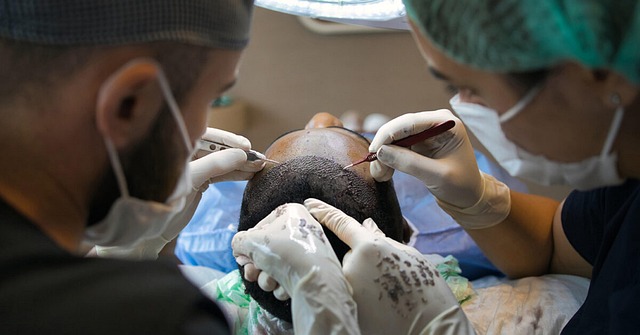Understanding Liposuction: A Comprehensive Guide to Body Contouring
Liposuction is a popular cosmetic surgical procedure designed to remove excess fat from specific areas of the body. This technique, also known as lipoplasty or body contouring, aims to reshape and slim targeted regions that are resistant to diet and exercise. As one of the most commonly performed cosmetic surgeries worldwide, liposuction has evolved significantly since its introduction in the 1970s.

Modern liposuction techniques often incorporate technologies such as ultrasound or laser energy to liquefy fat cells before removal, making the process more efficient and potentially less traumatic to surrounding tissues. These advanced methods can also contribute to skin tightening effects, enhancing overall results.
Which body areas can be treated with liposuction?
Liposuction can be performed on various parts of the body where stubborn fat deposits tend to accumulate. Common treatment areas include:
-
Abdomen and waistline
-
Thighs (inner and outer)
-
Hips and buttocks
-
Arms (particularly the upper arms)
-
Chin and neck
-
Back and bra line
-
Chest (especially for men with gynecomastia)
-
Knees and calves
It’s important to note that liposuction is not a weight-loss solution but rather a body contouring procedure. Ideal candidates are those who are at or near their target weight but struggle with localized fat deposits that don’t respond well to diet and exercise.
What are the benefits and risks of liposuction surgery?
Liposuction offers several potential benefits for those seeking to refine their body shape:
-
Improved body contours and proportions
-
Removal of stubborn fat deposits
-
Enhanced self-confidence and body image
-
Long-lasting results when combined with a healthy lifestyle
However, like any surgical procedure, liposuction carries certain risks:
-
Infection
-
Bleeding or hematoma
-
Adverse reaction to anesthesia
-
Contour irregularities or asymmetry
-
Skin discoloration or changes in sensation
-
Fluid accumulation (seroma)
-
Poor wound healing
To minimize these risks, it’s crucial to choose a board-certified plastic surgeon with extensive experience in liposuction procedures and to follow all pre- and post-operative instructions carefully.
How is fat removal achieved during liposuction?
The fat removal process in liposuction involves several steps:
-
Infiltration: A solution containing saline, local anesthetic, and epinephrine is injected into the treatment area to reduce bleeding and facilitate fat removal.
-
Fat disruption: The surgeon manipulates the cannula to break up fat cells. In some cases, additional technologies like ultrasound or laser energy may be used to liquefy the fat.
-
Aspiration: The disrupted fat cells are suctioned out through the cannula using a vacuum device or syringe.
-
Contouring: The surgeon carefully shapes the treated area to ensure smooth, natural-looking results.
The amount of fat that can be safely removed in a single session varies depending on the patient’s overall health, body composition, and the specific areas being treated. Generally, surgeons aim to remove no more than 5 liters of fat in one procedure to minimize risks.
What should you expect during recovery from liposuction?
Recovery from liposuction typically involves:
-
Wearing compression garments to reduce swelling and support the newly contoured areas
-
Managing discomfort with prescribed pain medication
-
Limiting physical activity for 1-2 weeks
-
Avoiding strenuous exercise for 4-6 weeks
-
Attending follow-up appointments with your surgeon
Most patients can return to work within a few days to a week, depending on the extent of their procedure and the physical demands of their job. Swelling and bruising are common and may take several weeks to fully resolve. Final results are usually visible within 3-6 months as the body heals and adjusts to its new contours.
How much does liposuction cost, and what factors influence pricing?
The cost of liposuction can vary significantly based on several factors:
-
Geographic location
-
Surgeon’s expertise and reputation
-
Number and size of treatment areas
-
Type of liposuction technique used
-
Facility fees and anesthesia costs
-
Post-operative care and garments
To provide a general idea of liposuction costs, here’s a comparison of average prices for different treatment areas:
| Treatment Area | Average Cost Range |
|---|---|
| Abdomen | $3,000 - $7,500 |
| Thighs | $2,500 - $6,000 |
| Arms | $2,000 - $5,500 |
| Chin/Neck | $2,000 - $4,500 |
| Back | $2,500 - $6,000 |
Prices, rates, or cost estimates mentioned in this article are based on the latest available information but may change over time. Independent research is advised before making financial decisions.
It’s important to note that liposuction is typically considered a cosmetic procedure and is not covered by health insurance. Many plastic surgery practices offer financing options to help make the procedure more accessible.
Liposuction remains a popular and effective method for body contouring, offering patients the opportunity to refine their silhouette and achieve their desired body shape. While the procedure can provide significant improvements, it’s essential to maintain realistic expectations and understand that liposuction is not a substitute for a healthy lifestyle. By choosing a qualified surgeon and following proper pre- and post-operative care, patients can maximize their chances of achieving satisfactory and long-lasting results.
This article is for informational purposes only and should not be considered medical advice. Please consult a qualified healthcare professional for personalized guidance and treatment.






